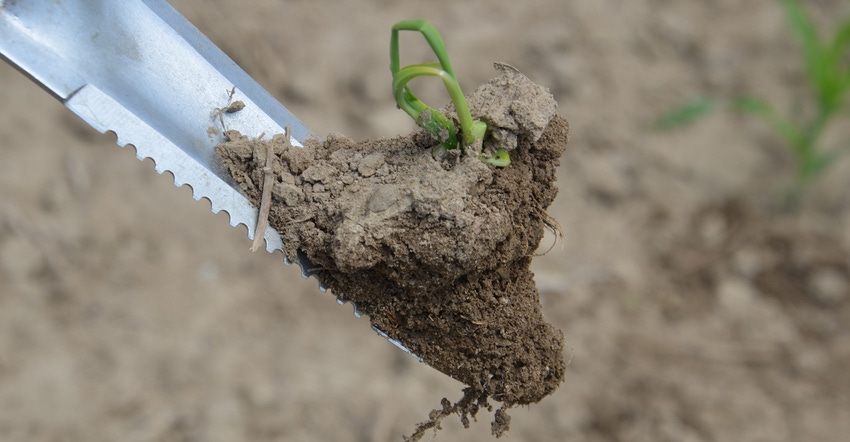December 31, 2019

Fall 2018 and spring and fall of 2019 were very hard on soils, causing lots of soil compaction. I saw cornfields during July and August that showed the effects of soil compaction created during the spring. It is one of the most important factors that can affect soil health and reduce yields. If your goal is to raise yields, reducing compaction is critical.
You need to diagnose the reasons for compaction on a field-by-field basis before corrective measures can be taken.
Surface soil compaction
Surface compaction can occur from the impact of raindrops or from excessive rains and ponding. If soil is left bare and exposed to hard rains, the impact of water breaks down larger soil aggregates, and the granular structure of soil on the surface is degraded.
Surface compaction can affect water infiltration into the soil and interfere with germination and emergence. If seedlings cannot break through the crust, it can lead to reduction in plant populations and yield. For short-term solutions, the crust may be broken by light disking or other tillage to help emergence.
To prevent crusting, leave a protective layer of crop residue on the surface, or grow cover crops and use minimum- or reduced-tillage practices. Residue helps absorb the impact of raindrops before they can hit the soil structure.
Use of forages in crop rotation can also help improve granular soil structure and reduce surface compaction. Proper management of irrigation water to control infiltration is also important.
Subsurface soil compaction
Soil compaction may be caused by wheel traffic and farm equipment, and it cannot be eliminated, only reduced. Tractors, manure spreaders, trucks, grain carts, combines and other farm equipment can create considerable pressure on the subsoil, causing compaction.
You can take precautions to minimize this as much as possible, and implement curative long-term agronomic measures to reverse it. Keeping soils healthy is a continuing process.
Soil compaction caused by traffic increases with the amount of soil moisture. Even though I am a strong believer in early planting, it may be better to plant later than mudding in seed. Of course, in a spring like 2019, we couldn’t have planted early anyway.
Use of a soil penetrometer can help determine the extent of subsurface soil compaction. Your field scout may be able to help you determine if you have a compaction problem. Use of good agronomic practices can help reduce compaction caused by wheel traffic.
Rotation of crops that have fibrous roots with crops that have deep roots will help reduce compaction. I strongly recommend the use of cover crops. They will improve the organic matter content of your soils, reduce compaction, improve soil health and increase yields. Management practices that improve organic matter content should help reduce surface soil compaction.
Nanda is director of genetics for Seed Genetics Direct. Email him at [email protected] or call 317-910-9876. The views expressed here do not necessarily represent the views of Farm Progress/Informa.
About the Author(s)
You May Also Like






